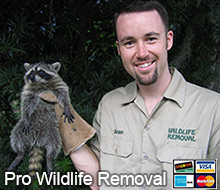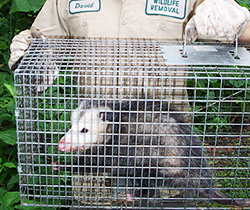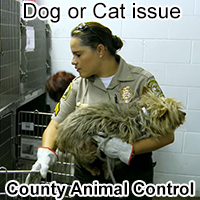- springvalley@aaanimalcontrol.com
Call 24/7 for a free quote:
702-577-2880
Spring Valley Wildlife Control / Nevada Animal Removal
Professional Wildlife Services - Animal Pest Control in Spring Valley, NV. Call us: 702-577-2880

- Noises in Your Attic?
- Unwanted Wildlife?
- Bird or Bat Problem?
- Rodent Infestation?
- We Can Solve It!
Please, no calls about DOG or CAT problems. Call animal services: (702) 455-7710.

 Professional Wildlife Services provides professional wildlife control for both residential & commercial customers in the
city of Spring Valley in Nevada. We offer custom animal control solutions for almost any type of wildlife problem, whether
it be the noises of squirrels running through the attic, a colony of bats living in a building, animals digging in your yard, or
the destructive behavior of a raccoon or other critter, we have the experience and the tools to quickly and professionally
solve your problem. For a consultation and price quote, give us a call at 702-577-2880
Professional Wildlife Services provides professional wildlife control for both residential & commercial customers in the
city of Spring Valley in Nevada. We offer custom animal control solutions for almost any type of wildlife problem, whether
it be the noises of squirrels running through the attic, a colony of bats living in a building, animals digging in your yard, or
the destructive behavior of a raccoon or other critter, we have the experience and the tools to quickly and professionally
solve your problem. For a consultation and price quote, give us a call at 702-577-2880
Click here to check our prices updated for year 2025. There are many Spring Valley pest control companies for animals out there, but not all of them are licensed and insured professionals. Make sure that you hire a competent expert for your Spring Valley exterminator of wildlife. At Professional Wildlife Services, we will be courteous and friendly and take the time to answer your questions. Give our Spring Valley trappers at Professional Wildlife Services a call, and we will listen to your problem, and make an appointment to perform an inspection. Feel free to email us at springvalley@aaanimalcontrol.com
 Resources for free wildlife removal in Spring Valley
Resources for free wildlife removal in Spring Valley
If you can't afford our pro wildlife work, you can try these agencies for free wildlife removal:
Clark County Animal Services: (702) 455-7710
Nevada Wildlife Commission: 702-486-5127
Spring Valley Police Department: 702-828-2640
These agencies will only help with certain types of wildlife problems, and they are not always consistent. If you want a high quality of
help done right, call our company.
 Nevada is full of wildlife, including snakes, squirrels, raccoons, skunks, opossums, and more. Wildlife removal is a complex field. I
recommend professional Spring Valley wildlife control services if you want to solve a critter problem legally and correctly. For example, we specialize in animals in the attic, which have broken into the house
and almost always have a nest of baby animals. It is necessary to perform correct
preventative repairs to keep pest animals a out of your house for good. We perform full building inspection, do the
the repairs and we also offer attic decontamination if necessary. Rats and mice love to live in attics, and can chew wires or leave droppings. Some Spring Valley animals
frequently enter homes, and correct removal is not a simple task.
Nevada is full of wildlife, including snakes, squirrels, raccoons, skunks, opossums, and more. Wildlife removal is a complex field. I
recommend professional Spring Valley wildlife control services if you want to solve a critter problem legally and correctly. For example, we specialize in animals in the attic, which have broken into the house
and almost always have a nest of baby animals. It is necessary to perform correct
preventative repairs to keep pest animals a out of your house for good. We perform full building inspection, do the
the repairs and we also offer attic decontamination if necessary. Rats and mice love to live in attics, and can chew wires or leave droppings. Some Spring Valley animals
frequently enter homes, and correct removal is not a simple task.
 DOG or CAT: If you need assistance with a domestic animal, such as a dog or a cat, you need to call your local
Clark County Animal Control
for assistance. They can help you out with issues such as stray dogs, stray cats, vaccinations, licenses,
pet adoption, lost pets, and more. If you have a wildlife problem, you can try calling the Clark County animal control, and see what they have to
say, but they will certainly not help you with a complex wildlife problem such as critters in your attic. They are a free government agency that
helps with dog and cat issues only.
DOG or CAT: If you need assistance with a domestic animal, such as a dog or a cat, you need to call your local
Clark County Animal Control
for assistance. They can help you out with issues such as stray dogs, stray cats, vaccinations, licenses,
pet adoption, lost pets, and more. If you have a wildlife problem, you can try calling the Clark County animal control, and see what they have to
say, but they will certainly not help you with a complex wildlife problem such as critters in your attic. They are a free government agency that
helps with dog and cat issues only.
Clark County Animal Services: (702) 455-7710
Spring Valley Wildlife Tip:
Raccoons (Procyon lotor) are a familiar sight across North and Central America, recognized for their masked faces and ringed tails. These adaptable mammals have successfully integrated into a wide range of environments, from dense forests to bustling urban centers. Their intelligence, dexterity, and opportunistic nature have contributed to their widespread success. This article delves into the various aspects of raccoon biology, including their appearance, life cycle, habitat, diet, and behavior.
Appearance: Distinctive Features
Raccoons are medium-sized mammals, typically weighing between 10 and 30 pounds (4.5 to 13.5 kg), although individuals can be larger depending on their diet and location. Their body length, including their bushy tail, ranges from 24 to 40 inches (60 to 100 cm). Their most distinguishing feature is the black mask that covers their eyes, resembling a robber's disguise. This mask is thought to help reduce glare and enhance their night vision.
Their fur is generally a grizzled gray to brownish-black, providing excellent camouflage in various environments. The fur is dense and consists of a short undercoat for insulation and longer, coarser guard hairs for protection against water and abrasion. One of their most notable features is their ringed tail, which typically has five to ten alternating black or dark brown rings. The tail, while not prehensile, aids in balance.
Raccoons have five highly dexterous toes on each paw, equipped with non-retractable claws. Their front paws are particularly sensitive and allow them to manipulate objects with remarkable skill. This manual dexterity is crucial for foraging and handling food, often giving the impression that they are "washing" their food, although this behavior is more about moistening and examining it.
Biology: Anatomy and Physiology
Raccoons possess keen senses, particularly their hearing and night vision, which are essential for their nocturnal lifestyle. Their eyes have a tapetum lucidum, a reflective layer behind the retina that enhances their ability to see in low-light conditions. Their sense of smell is also well-developed, aiding them in locating food sources.
Their teeth are adapted for an omnivorous diet. They have sharp canines for tearing meat and broad molars for grinding plant matter. Their dental formula reflects this versatile feeding habit. Raccoons have a relatively high level of intelligence, often demonstrating problem-solving abilities and adaptability to new situations. Studies have shown their capacity for learning and remembering solutions to complex tasks.
Life Cycle: From Birth to Maturity
Raccoons typically breed in late winter or early spring. The gestation period lasts approximately 63 to 65 days. Females, known as sows, usually give birth to a litter of one to seven kits in a sheltered den. Dens can be located in tree cavities, hollow logs, rock crevices, or even human-made structures like attics and chimneys.
Newborn kits are blind and helpless, completely dependent on their mother for warmth, food, and protection. Their eyes open after about three weeks. The mother nurses the kits for several months, and they begin to explore outside the den around eight to ten weeks of age. During this time, they learn essential survival skills from their mother, including foraging techniques and predator avoidance.
The young raccoons typically remain with their mother until the following spring, when they become independent and establish their own territories. Raccoons reach sexual maturity around one year of age. In the wild, their average lifespan is two to five years, although they can live longer in captivity, sometimes exceeding ten years. Common causes of mortality in the wild include predation, disease, and vehicle collisions.
Habitat: Adaptable Distribution
The natural habitat of raccoons includes deciduous and mixed forests, but their adaptability has allowed them to thrive in a wide array of environments. They can be found in coastal marshes, mountainous regions, and even urban and suburban areas. Their ability to exploit various food sources and find shelter in diverse locations has contributed to their successful colonization of human-modified landscapes.
In urban environments, raccoons often den in attics, under porches, and in sheds. They forage in garbage cans, gardens, and pet food bowls. While their presence in urban areas can lead to conflicts with humans, it also highlights their remarkable ability to adapt to human presence.
Diet: Opportunistic Omnivores
Raccoons are opportunistic omnivores, meaning they will eat almost anything available. Their diet varies depending on the season and their habitat. In natural environments, their diet may include fruits, nuts, berries, insects, worms, frogs, fish, eggs, and small mammals. Their sensitive front paws allow them to probe for food in shallow water, under rocks, and in crevices.
In urban and suburban areas, raccoons commonly scavenge for food in garbage cans and compost bins. They may also raid gardens for fruits, vegetables, and corn. Their adaptability in finding and consuming a wide range of food sources is a key factor in their success in diverse environments.
Behavior: Nocturnal and Intelligent
Raccoons are primarily nocturnal animals, meaning they are most active during the night. They spend the day sleeping in their dens. While generally solitary, they may form loose social groups, particularly mothers with their young. During the breeding season, males may also associate with females.
Raccoons are known for their intelligence and problem-solving abilities. They have been observed figuring out how to open containers, climb fences, and navigate complex environments. Their curiosity often leads them into encounters with humans, sometimes resulting in nuisance behaviors.
Communication among raccoons includes a variety of vocalizations, such as chattering, hissing, and growling. They also use scent marking to communicate territorial boundaries and other information. Their adaptability, intelligence, and resourcefulness have allowed raccoons to thrive in a changing world, making them a common and often fascinating part of the wildlife landscape.
In conclusion, the raccoon is a remarkable animal characterized by its distinctive appearance, adaptable biology, complex life cycle, widespread habitat, opportunistic diet, and intelligent behavior. Their ability to thrive in both natural and human-dominated environments underscores their resilience and adaptability, making them a subject of ongoing interest and study.
Spring Valley, NV Animal Control News Clip:
No current news article at this time.
We are Spring Valley wildlife management experts, and are familiar with all the pest animals, including all species of Nevada snakes and
bats. We at Professional Wildlife Services are the best among Spring Valley nuisance wildlife companies and can solve all animal damage issues. Our wildlife operators are skilled at bird control and
bat removal, and would be happy to serve your Spring Valley bat control or pigeon and bird control needs with a professional solution. Opossums, skunks, moles, and other animals
that can damage your lawn - we are the exterminators who can capture and remove them. Our specialty is removal of animals in homes such as raccoons in the attic or squirrels in the attic.
Our professional pest management of wildlife and animals can solve all of your Spring Valley
critter capture and control needs. Give us a call at 702-577-2880 for a price quote and more information.
If you have any questions about a wildlife problem in Spring Valley, or wildlife removal in Clark County, please give Professional Wildlife Services a call at 702-577-2880, and we will listen to your problem, give you a price quote, and
schedule an appointment, usually same day or next day, to solve the problem.


















